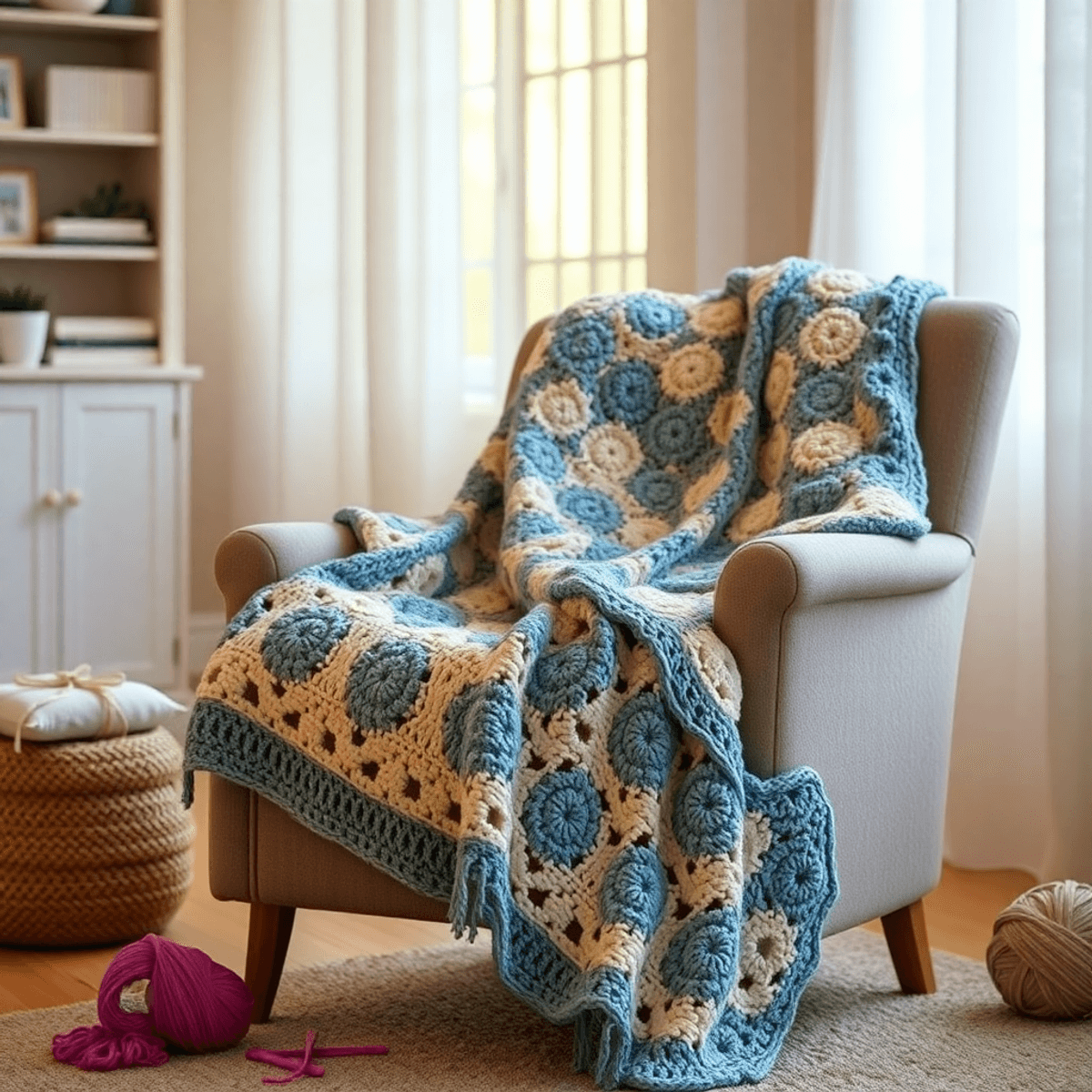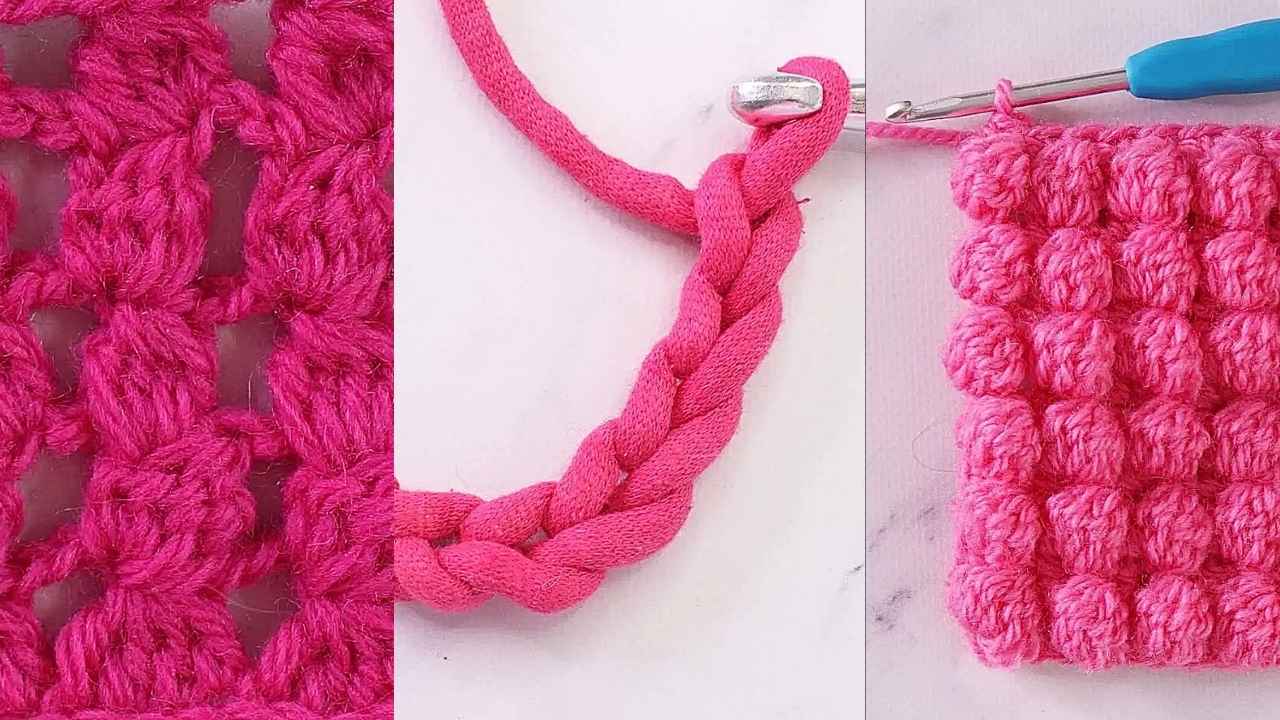learn how to crochet a blanket : 10 Tips to Master it

Introduction
learn how to crochet a blanket: Crocheting a blanket brings warmth not just to your home, but to your soul. This timeless craft offers a perfect escape from daily stress, allowing you to create something beautiful with your own hands. As you watch your blanket grow stitch by stitch, you’ll experience a sense of accomplishment that’s hard to match.
Why start crocheting blankets?
- Creates a meditative state through repetitive motions
- Produces lasting, meaningful gifts for loved ones
- Builds confidence in your creative abilities
- Reduces stress and anxiety
- Provides a sense of productivity during downtime
Whether you’re picking up a crochet hook for the first time or returning to the craft after a break, mastering blanket creation doesn’t have to feel overwhelming. We’ve gathered 10 essential tips to guide you through the process, from selecting your first pattern to adding those finishing touches. These practical strategies will help you create beautiful, cozy blankets while enjoying every step of your crocheting journey.
Ready to start your crocheting adventure? Let’s dive into these game-changing tips that will transform you from a beginner to a confident blanket maker.
1. Choosing the Right Pattern
Selecting the right pattern sets the foundation for your crocheting success. A simple rectangular pattern creates the perfect starting point for your first blanket project. The straight edges and repetitive stitches help you build confidence without feeling overwhelmed.
Beginner-Friendly Pattern Options:
- Basic striped blanket
- Solid-colored throw
- Simple granny square design
- Classic ripple pattern
The half double crochet (hdc) stitch stands out as an ideal choice for beginners. This versatile stitch works up faster than single crochet while maintaining stability and creating an attractive texture. You’ll find the rhythm of hdc stitches predictable and manageable, making it easier to spot and fix mistakes.
Why Half Double Crochet Works:
- Creates a medium-height fabric
- Offers balanced tension control
- Produces fewer gaps than double crochet
- Works well with most yarn weights
Ready-made patterns labeled “easy” or “beginner” provide clear instructions and minimal stitch variations. Look for patterns featuring basic rectangular shapes without complicated color changes or intricate stitch combinations. These simpler designs let you focus on mastering fundamental techniques while creating a beautiful, functional blanket.
2. Gathering Supplies
Your crochet journey starts with assembling the right tools. Here’s what you’ll need:
Essential Materials:
- A crochet hook (size H/8-5mm to K/10.5-6.5mm for beginners)
- Yarn (2-3 skeins for a small blanket)
- Scissors
- Tapestry needle
- Stitch markers
Beginner-Friendly Yarns:
- Lion Brand Thick and Quick: Perfect for quick projects with its super-bulky weight
- Red Heart Super Saver: Durable, affordable, and available in countless colors
- Bernat Blanket Yarn: Extra soft with excellent stitch definition
Choosing Your Hook Size:
The right hook size depends on your yarn weight:
- Worsted Weight (4): 5mm-6mm hook
- Bulky (5): 6mm-6.5mm hook
- Super Bulky (6): 6.5mm-8mm hook
Pro Tip: Check your yarn label – it lists the recommended hook size and expected gauge. Lighter colored yarns make it easier to see your stitches while learning.
3. Making a Gauge Swatch
A gauge swatch is your secret weapon for creating perfectly sized blankets. This small test piece helps you match the pattern’s intended measurements and avoid the frustration of blankets turning out too big or too small.
Here’s how to create your gauge swatch:
- Chain 20 stitches – This gives you enough width to measure accurately.
- Work 20 rows in your chosen stitch pattern.
- Measure the center 4×4 inches of your swatch.
- Count the stitches and rows within this area.
Your pattern will specify requirements like “16 stitches and 20 rows = 4 inches.” If your swatch doesn’t match these numbers:
- Too many stitches? Switch to a larger hook.
- Too few stitches? Use a smaller hook.
Pro tip: Make your swatch using the same yarn and hook you’ll use for your blanket. Work with relaxed, consistent tension – this is how you’ll crochet your actual project.
Remember to block your swatch if your pattern calls for blocking the finished blanket. This extra step reveals how your yarn behaves after washing and drying.
For those who are new to crocheting, understanding different yarn types and their characteristics can be quite beneficial. A helpful resource is this field guide, which provides valuable insights into various yarns and their uses.
4. Learning Stitch Techniques
Mastering essential crochet stitches forms the foundation of your blanket-making journey. Here are the three fundamental stitches you’ll need:
1. Single Crochet (sc)
- Creates a tight, dense fabric
- Perfect for sturdy blankets
- Works up slower than other stitches
- Ideal for textured patterns
2. Half Double Crochet (hdc)
- Strikes a balance between height and density
- Creates a medium-weight fabric
- Works up faster than single crochet
- Great for everyday blankets
3. Double Crochet (dc)
- Taller stitch with more drape
- Creates an airy, lightweight fabric
- Works up quickly
- Excellent for lacy patterns
You’ll spot these abbreviations (sc, hdc, dc) in written patterns. Each stitch builds upon the previous one in height and complexity. The single crochet creates one loop, half double crochet creates two loops, and double crochet creates three loops. Practice these stitches in rows of 20 to build muscle memory and maintain consistent tension throughout your blanket project.
5. Tracking Your Progress
Keeping track of your progress is crucial when crocheting a blanket. You’ll need two essential tools: stitch markers and a row counter.
Here’s how to effectively track your progress:
- Place stitch markers at the beginning and end of each row
- Use different colored markers to indicate pattern repeats
- Count your stitches every few rows to catch mistakes early
- Mark completed sections on your printed pattern
- Take progress photos to visualize your advancement
A row counter can be:
- A physical clicking device
- A smartphone app
- A simple tally mark system on paper
Pro tip: Create a simple tracking sheet with checkboxes for each row or pattern repeat. This visual aid helps you stay motivated by showing your progress in real-time.
Remember to check your stitch count regularly – it’s easier to fix mistakes when you catch them early rather than discovering them several rows later. Keep your markers and counter within arm’s reach while working on your project.
6. Weaving in Ends & Adding Borders/Blocking Your Blanket
A polished blanket requires careful attention to finishing details. Here’s how to achieve a professional look:
Weaving in Ends
- Use a tapestry needle to weave loose yarn ends back through your stitches
- Work in a zigzag pattern for secure fastening
- Weave through at least 3-4 inches of stitches
- Trim remaining yarn close to your work
Adding Borders
- Single crochet borders create clean edges
- Shell stitch borders add decorative flair
- Work border stitches evenly around all sides
- Use stitch markers at corners for consistent spacing
Blocking Tips
- Pin your blanket to desired dimensions on blocking mats
- Spray with water until damp
- Let dry completely before removing pins
- Steam blocking works well for acrylic yarns
Your blanket’s durability depends on proper end weaving – loose ends can unravel with washing and use. Take time to secure each yarn end properly, especially at color changes or new skein attachments. A well-executed border not only enhances appearance but also provides structural stability to your blanket’s edges.
7. Taking Breaks & Practicing Regularly
Creating a blanket requires patience and dedication. Your body needs regular breaks to prevent physical fatigue and maintain the quality of your work. Here’s how to practice effectively while avoiding burnout:
- Set a timer for 30-45 minute crochet sessions
- Stand up, stretch your hands and wrists
- Roll your shoulders and neck between sessions
- Keep your workspace well-lit to reduce eye strain
- Work on your blanket during your peak energy hours
- Create a comfortable crafting space with proper back support
- Listen to music or audiobooks while crocheting
- Join online crochet communities for motivation
Tip: Keep your project visible in your living space – it serves as a gentle reminder to practice regularly without feeling overwhelmed.
Remember to celebrate small victories as you progress through your blanket. Each completed row brings you closer to mastery, and consistent, mindful practice yields better results than marathon crocheting sessions that lead to exhaustion.
Conclusion
Mastering crochet blankets doesn’t have to be an intimidating journey. You’ve now got a solid foundation of essential tips to create beautiful, cozy blankets you’ll cherish for years. Remember – every experienced crocheter started exactly where you are now.
Start with a simple pattern, gather your supplies, and take that first step. Your initial blanket might not be perfect, but each stitch brings you closer to becoming a skilled crocheter. The joy of wrapping yourself in a blanket you’ve made with your own hands is truly unmatched.
Ready to begin your crocheting adventure? Pick up that hook, choose your favorite yarn, and let your creativity flow. Your first handmade blanket awaits!
FAQs (Frequently Asked Questions)
What are the benefits of crocheting a blanket?
Crocheting a blanket is a relaxing and rewarding hobby that allows you to express your creativity. It can help reduce stress, improve focus, and provide a sense of accomplishment as you see your project come to life.
How do I choose the right pattern for my first blanket?
For your first blanket project, it’s important to select a simple rectangular pattern. Starting with an easy stitch like half double crochet (hdc) can make the process smoother and more enjoyable. Look for beginner-friendly patterns that guide you step by step.
What supplies do I need to start crocheting a blanket?
Essential materials include yarn and a crochet hook. For beginners, recommended yarns are Lion Brand Thick and Quick or Red Heart Super Saver, as they are affordable and easy to work with. Be sure to choose the right size crochet hook based on your yarn choice.
What is a gauge swatch and why is it important?
A gauge swatch is a small sample of your crochet work that helps ensure your blanket turns out the right size. Creating an accurate gauge swatch before starting your project is crucial for matching the pattern size and achieving the desired dimensions.
How can I keep track of my progress while crocheting a large project?
Keeping track of your progress is essential when working on large projects like blankets. Using stitch markers or a row counter can help you monitor how many rows you’ve completed and ensure consistency throughout your work.
What techniques should I use for finishing my blanket?
To properly finish off your blanket, you’ll need to weave in loose ends using a tapestry needle. Additionally, consider adding borders or blocking your blanket for a polished look.








